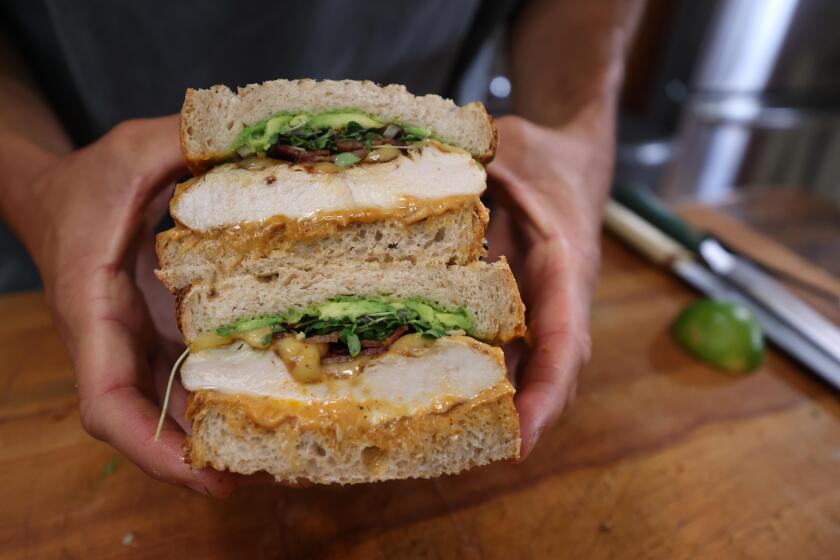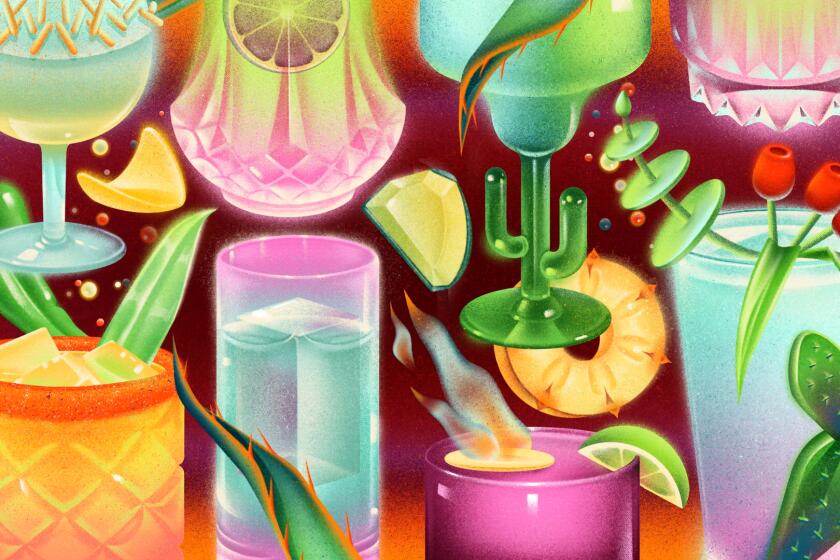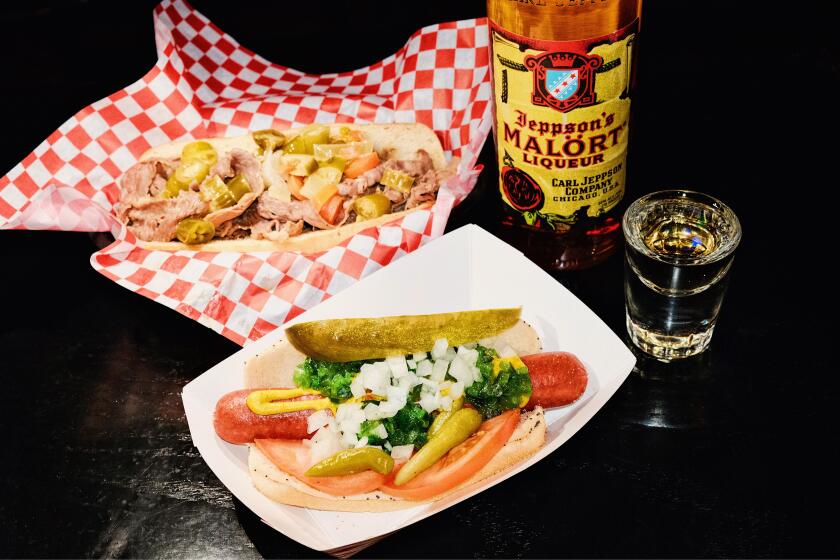Nutrition group petitions for federal regulation of sugary drinks
A nutrition advocacy group joined with scientists and health agencies Wednesday to ask the federal government to decide just how much sugar is “safe” in sodas, raising the bar in its crusade to curb the “dangerously high” amounts Americans consume.
Drinks are the single largest source of added sugar in the diet, and the request to the FDA is one way to fight back against the “ubiquitous marketing and heavy consumption” of sugar-sweetened beverages, the executive director of the Center for Science in the Public Interest, Michael Jacobson, said at a news conference in Washington.
The average American consumes “far more” added sugar than is recommended by the federal government, the World Health Organization and the American Heart Assn., and overconsumption leads to obesity, diabetes, heart disease, tooth decay and other problems, Jacobson said. The Dietary Guidelines for Americans and the heart association recommend that of a 2,000-calorie daily diet, about 32 grams, or about 8 teaspoons, could be added sugars. Surveys have shown the average consumption at 18 to 23 teaspoons a day.
By sugar, CSPI means sweeteners from cane and beets, corn, honey, brown rice, malt and other sources of what Jacobson called “nutritionally worthless calories.”
At present, sweetened beverages are considered GRAS, or generally recognized as safe, by the FDA. Sugar, Jacobson noted, is not a toxin and is “perfectly fine” in moderation. Even he -- sometimes pegged a “nutrition nanny” -- puts a teaspoon of sugar in his tea.
But Americans, on average, eat 78 pounds of added sugar a year, or 385 calories a day -- and many scientists have concluded that is not safe, Jacobson said. One in seven Americans get at least a quarter of their calories from added sugar, he said.
The American Beverage Assn., a trade group, responded by saying the industry has increased the options for consumers. It noted that about 45% of all non-alcoholic beverages purchased have no calories, and that the average calories per serving have declined 23% since 1998.
Jacobson praised the new products, sweetened with plants such as stevia or other manufactured products, and said the public can expect many more in the years to come.
And while Americans are drinking 37% fewer soft drink calories than in 2000, as the beverage group noted, the totals are four times those of the 1960s, Jacobson said. Both sides noted that full-calorie sodas have been removed from schools, and the beverage group said it has added calorie labels to the front of its packages so consumers know more readily what they’re buying.
“Everyone has a role to play in reducing obesity levels – a fact completely ignored in this petition,” the trade group said in its statement.
Beverages are the focus of the FDA petition because it’s much easier to overconsume sugar in liquids than solids, said Walter Willett, professor of nutrition and epidemiology at the Harvard School of Public Health, who joined Jacobson at the news conference, despite his general reluctance to limit personal choice. But he has concluded, he said, “We really must do something.”
Of the 16 teaspoons of added sugar in a 20-ounce soda, he said, “You can gulp it down in a minute or two.”
And the relation between soda consumption and type 2 diabetes is clear, even beyond any weight gain from the calories, he said. “Tens of millions of people are consuming very large amounts – five or six a day and more than doubling their risk of type 2 diabetes,” he said.
Added sugars also can replace more nutritionally dense foods, and contribute to obesity, dental cavities, gout. Sugar has “zero nutritional benefit,” Willett said.
Jacobson acknowledged that some people have concerns about artificial sweeteners, but those “pale” when compared with the problems associated with sweetened beverages, he said.
Willett is among 41 scientists and physicians who signed a letter to FDA commissioner Margaret Hamburg in support of the petition.
It asks the FDA to set a safe level of added sugars in beverages, and to require those limits to be phased in over several years. The petition did not propose a specific safe level, but notes that several health agencies identified 2 1/2 teaspoons, or 10 grams, as reasonable per drink. CSPI’s petition also asks the FDA to encourage voluntary efforts to reduce added sugars in cereals and baked goods, and frozen desserts, and to embark on an education campaign.
CSPI’s proposal has the support of the public health departments in Baltimore, Boston, Los Angeles, Philadelphia, Seattle and Portland, Ore., CSPI said. New York City has a measure to limit serving sizes to 16 ounces in many spots.
Dr. Scott I. Kahan, who teaches at the Johns Hopkins Bloomberg School of Public Health and at George Washington University School of Public Health as well as treating patients, likened the sugar situation to historical health issues. When infectious diseases were a leading cause of death, the government stepped in and required safe food and clean water, he said. That and other actions led to 90% reduction in infectious disease rates. And half a century later, tobacco was a leading cause of disease and death; government responded with taxes, marketing regulations and education campaigns, leading to a substantial drop in smoking rates, he said.
It is sugar’s time, and CSPI’s proposal would help create an environment that makes it easier for people to be healthy, he said.
The FDA is required to respond to the petition within 180 days; it can approve it, deny it, or take a third position that could include asking for additional information. Public comments are welcome, a spokeswoman said.
@mmacvean on Twitter
More to Read
Eat your way across L.A.
Get our weekly Tasting Notes newsletter for reviews, news and more.
You may occasionally receive promotional content from the Los Angeles Times.











